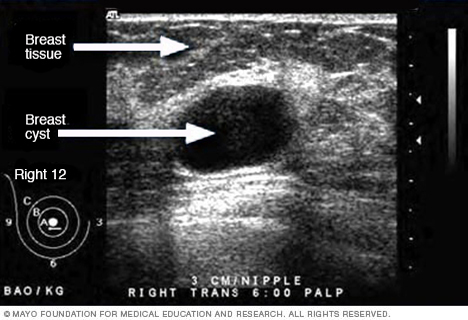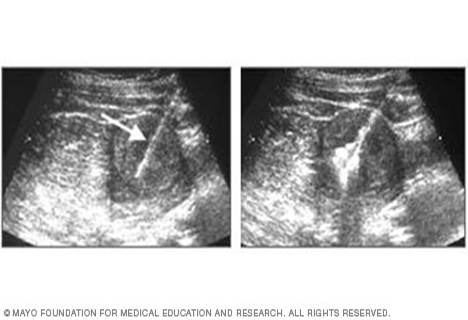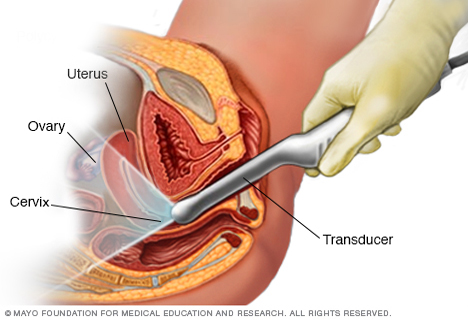During an ultrasound exam, you may need to remove jewelry and some or all of your clothing, change into a gown, and lie on an examination table. Gel is applied to your skin to keep air pockets that can block the sound waves from forming.
A trained technician (sonographer) presses a small, hand-held device (transducer), about the size of a bar of soap, against your skin over the area being examined, moving it as necessary to capture the image. The transducer sends sound waves into your body, collects sound waves that bounce back and sends them to a computer, which creates the images.
Some ultrasounds are done inside your body. A transducer is attached to a probe that's inserted into a natural opening in your body. Examples of these exams include:
-
Transesophageal echocardiogram. A transducer is inserted into your esophagus, usually with sedation, to obtain heart images.
-
Transrectal ultrasound. A transducer is inserted into a man's rectum to view his prostate.
-
Transvaginal ultrasound. A transducer is inserted into a woman's vagina to view her uterus and ovaries.
Ultrasound is usually painless. However, you may experience mild discomfort as the sonographer guides the transducer over your body, especially if you're required to have a full bladder.
A typical ultrasound exam takes from 30 minutes to an hour.




